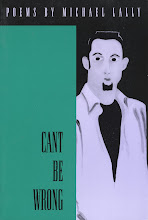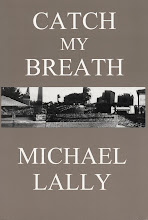
This collection of interviews with Bob Dylan is in many ways much more revealing and sometimes more interesting than CHRONICLES, the first volume of his official autobiograhy. Not as literature, or personal myth manipulation, or sustained life story (no matter how choppy CHRONICLES was, it still cohered as a piece of writing). But as autobiography.
The interviews are ordered chronologically, from a radio interview in 1962 to an interview with The Los Angeles Times in 2004 (the book itself came out in ’06, though I only recently picked up the paperback version because it’s now available at a big discount).
There’s something about celebrity interviews that usually comes across as phony or canned. But a lot of the time—especially with someone as evasive yet uniquely direct as Dylan—an interview can expose angles of perspective on an “artist” that otherwise we’d never encounter.
That’s the case here. Because it spans almost his entire performing and recording career, and because the interviewers are varied and the setting and intent of the interviews equally varied, and because of the variety in Dylan’s personas and intentions and capacity for normal conversation, it adds up to an enlightening series of what seem like attempts by Robert Zimmerman to truly tell his story, or at least the story of his role as Bob Dylan musical original, even genius.
I’ve had an ongoing mental review of Dylan and his approaches to his music and his persona since before he recorded his first album when I ran into him in the Village where we were both hanging out but with different crowds (him the folkies, me the jazz scene) and I pegged him for an arrogant phony from in front (which easily could have been said of me at the time).
But when I heard his early recordings (introduced to me by my first wife, Lee, who brought them with her from Buffalo to Spokane, Washington, where I was stationed at the time of our marriage) I realized no matter how he came across in person to me, on record he was a genius, doing what I was trying to do with my poetry and other writing, but doing it so much better and so much more successfully.
I was envious, but I was also in awe. And I continued to view Dylan and his music with a double perspective, part blown away by his amazing musical shifts and surprises, while at the same time being critical of his public personas.
Like in an interview not included here that I read in the Village Voice in 1964, not long after I first heard his early recordings, when he described himself as “just a guitar player” as I remember it. I was offended by what I took as the faux humility of a guy who was being touted as a “great poet” and breath of fresh air not just in music but in our entire society because he was telling the truth to power, but the truth of the moment was he had become so much more than a mere guitar player, or musician, or even songwriter/singer, he had become the uncrowned king of his generation.
In later years I was always bugged by the spin that was put on the first big changes in his music and persona after he “went electric”—what others, and sometimes Dylan, described as an attempt to throw off the designation of “spokesman for an entire generation” I saw as just a change in the drugs he was imbibing, just like most of the rest of us in and outside the music world.
So as much as I have always loved and been amazed by Dylan’s musical “genius,” I’ve been upset or at least put off by all the subterfuges, as I saw them, he employed to avoid responsibility for what he had wrought, or at least majorly contributed to.
This collection of interviews goes a long way to resolving that conflict I’ve had with this contemporary. Watching Dylan go through his changes over more than four decades, big and small, and try to explain or avoid explaining them to a regiment of interviewers ended up endearing him to me. I can read in his answers, even the deliberately opaque ones, a pretty clearheadedly consistent attempt to be as true to his interior music and vision as the times and circumstances of his life allowed, while doing his best to not let anything get in the way of that.
After reading DYLAN ON DYLAN, I feel more sympathy and empathy for his personal struggles with fame and his creativity and the problems and opportunities and plain business surrounding both from the beginning, and I appreciate all that much more, like I always have the music. If you dig Dylan, I highly recommend it.
















6 comments:
can't wait to read it ...
i'm sure he's got the stories ...
always felt that he struggled to not lose his self or his art to the character - glad he's footnoting ...
didn't you run into to him a few more times at hollywood do da's years later - or do i have to wait for the "lally memoirs" ...?
In 1964 I went to see Joan Baez in Asbury Park. She song charmingly for 30 min. or so and than invited out a scruffy guy with a guitar who could not sing. It turned out to be Dylan. As I remember he was justfiably booed.
i think he remembers you too jim - you're mentioned in "idiot wind" ...
I wish I was reading that right now.
And even tho I never really articulated it to myself, his phases and styles no doubt did follow his current drug of choice. This seems most obvious during what I would guess was his amphetamine /Bringing it All Back Home, Highway 61 and Blond on Blond era. (As much as I admire them, I can't really listen to them these days.)
And this was followed by his relatively "normal" phase Starting with John Wesley Harding - which I might just listen to right now as I drive to - ugh - The Valley.
Another good book, perhaps the best on this topic, is "Bob Dylan: the Essential Interviews," edited by Jonathon Cott. Wenner Books published it in 2006, and it's 445 words.
Toby, it's the same book. The paperback cover just says Dylan on Dylan (which didn't transfer so well in the image here) but the title page says DYLAN ON DYLAN The Essential Interviews Edited by Jonathon Cott, and it's 445 pages brother. And it is the best.
Post a Comment